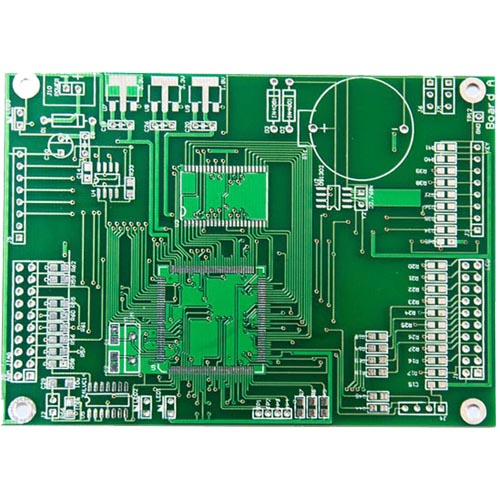Server Power Backplane PCB Prototype
Name: Server Power Backplane PCB
Plate: KB6167F
Plate thickness: 1.6mm
Layers: 2L
Size: 78.26*61.3mm
Minimum aperture: 0.281mm
Line width/moment: 0.21*0.186mm
Copper foil thickness: 1/1OZ
Surface treatment: lead-free spray tin
Solder mask/character: green oil white character
Server Power Backplane PCB Prototype The backplane is similar to the motherboard of a computer. It is ubiquitous in large PC network servers and also other computer systems with frequent processor upgrades.
In a sense, a backplane motherboard doesn’t have a real motherboard. In fact, on a backplane motherboard, the components that would normally be found on the motherboard would be placed on the expansion adapter server Raid controller card instead inserted into the slot.
What is a Server Power Backplane PCB?
- The Server Power Backplane PCB is a printed circuit board, similar to a server motherboard, but it doesn’t have onboard storage and processing power.
- Boards with slots are called backplanes rather than motherboards. Systems using such circuits are called backplane systems.
- In its simplest form, it’s essentially a socket for memory cards, processor cards, and other component boards.
- This server backplane is called a “passive backplane”.
- Another system is called an active backplane, where the main backplane is equipped with bus control and other circuits.
- The backplane can also be described as a printed circuit board, much like a motherboard, but without onboard processing or storage components.
- The backplane typically has components on the motherboard for expansion that connect to the slotted adapter cards.
Backplane Components
- A backplane is nothing more than a piece of paper with slots for interconnects in it, without any major chips in it other than the motherboard. Server power conditioning circuit.
- The backplane is limited to a single type of bus that connects various cards.
- The life of the backplane is directly related to the condition of the connector.
- Some connectors can withstand hundreds of insertions or removals, depending on the quality of their connectors.
Server Backplane Connectors
- They connect to the backplane to perform different tasks. Flexibility, modularity and also ease of use make these connectors ideal for designing custom computer solutions.
- In contrast to motherboards, server backplanes are not considered to contain active components, such as microprocessors.
- This misunderstanding may stem from the fact that the backplane connector is connected to a single board computer system or the motherboard of the system host. The system operates as a motherboard.
Backplane Design
- There is a problem with the design of the backplane connectors, they cannot handle the signal quality.
- When the signal comes in through the external server, it goes through the traces on the daughter card and then through the backplane connector.
- As our need for speed continues to grow, backplane connectors can steer signals in the right direction.
- We also have a difficult job ahead! Increased data transfer speeds and smaller, denser data pipes can lead to reduced signal integrity.
Simply put, it is too much, too fast, and too small. What exactly is going on with the signal that causes it to decompose at an extremely high rate?
Signal integrity
Digital signals use precisely measured voltage changes to represent information. In digital circuits, this voltage change is called a “pulse”.
The pulse begins with an “off” state representing zero. It then increases to a certain level of voltage (“on” one or one) for a specific period (pulse length).
The pulse then returns in the “off” direction. This series of intermittent changes is unique to each item of information in the number system, right down to the characters you read in this paragraph.
In theory, a perfect pulse has precisely marked voltage changes. This ensures that the actual signal is accurate, making the digital data signal and the data it represents accurate and precise.
Real pulses cannot function this way. The voltages they produce tend to rise gradually and ALSO then be easily distorted.
If a particular pulse is affected by any of these reasons (low tension at high speeds, crosstalk, or impedance), the system may not accurately reflect the digital signal.
The result may be that the data sent does not match the data received.
Name: Server Power Backplane PCB
Plate: KB6167F
Plate thickness: 1.6mm
Layers: 2L
Size: 78.26*61.3mm
Minimum aperture: 0.281mm
Line width/moment: 0.21*0.186mm
Copper foil thickness: 1/1OZ
Surface treatment: lead-free spray tin
Solder mask/character: green oil white character






